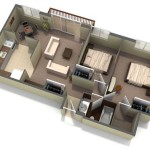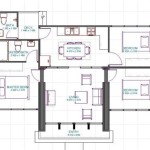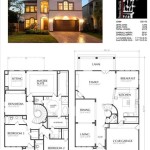Plan and Elevation in Kerala Style House Design: A Comprehensive Overview
Kerala style house design, deeply rooted in the cultural and climatic context of Kerala, India, exhibits unique characteristics in its architectural planning and elevation. These designs prioritize natural ventilation, ample lighting, and a harmonious integration with the surrounding landscape. Understanding the key principles of plan and elevation is crucial for appreciating and implementing this architectural style.
This article aims to dissect the essential elements of plan and elevation in Kerala style house design, providing a comprehensive overview of the distinct features and principles that define this architectural vernacular. We will explore the layout principles, roof structures, facade treatments, and the overall aesthetic that contribute to the characteristic look and functionality of Kerala homes.
Key Planning Principles in Kerala Style Architecture
The planning of a Kerala style house is deeply influenced by traditional principles of Vaastu Shastra, a Hindu system of architecture that emphasizes harmony with nature and cosmic energies. The cardinal directions play a significant role in determining the placement of rooms and other architectural elements.
The 'Poomukham,' the entrance veranda, is a prominent feature, often facing east or north to welcome positive energy and morning sunlight. This space functions as a transitional zone between the exterior and interior, offering a shaded area for relaxation and social interaction.
The central courtyard, or 'Nadumuttam,' is another essential element. This open space serves as the heart of the house, providing light and ventilation to the surrounding rooms. Traditionally, it was used for various household activities and often housed a 'Thulasi Thara' (holy basil plant). The Nadumuttam promotes cross-ventilation, which is essential in the humid climate of Kerala.
Rooms are typically arranged around the Nadumuttam, ensuring easy access and a sense of interconnectedness. The kitchen, traditionally located in the southeast corner, is designed according to Vaastu principles to ensure the well-being of the occupants. Bedrooms are often placed in the southwest and northwest corners, providing privacy and protection from the harsh afternoon sun.
The use of natural materials, such as wood, laterite stone, and clay tiles, is another defining characteristic of Kerala style planning. These materials contribute to the thermal comfort of the house, keeping it cool during the hot summer months. The layout often incorporates features like courtyards and verandas to promote natural ventilation and minimize the need for artificial cooling.
Understanding Elevations: Roof Forms and Facade Treatments
The elevation of a Kerala style house is characterized by its distinctive roof forms and facade treatments. The most prominent feature is the sloping roof, designed to effectively shed rainwater during the monsoon season. These roofs are typically constructed with wooden rafters and covered with clay tiles, which provide insulation and contribute to the aesthetic appeal.
The roof often extends beyond the walls, creating an overhang that provides shade and protects the walls from rain. This overhang also contributes to the overall aesthetic of the house, giving it a distinctive and recognizable silhouette. Gable roofs and hip roofs are common, often with intricate wooden detailing at the eaves.
The facade treatments are equally important in defining the elevation. Laterite stone, a locally available material, is frequently used for the base and walls of the house. The warm, earthy tones of laterite stone complement the surrounding landscape and create a sense of grounding.
Wooden elements are also prevalent in the facade, often used for windows, doors, and decorative features. Intricate carvings and detailing are common, reflecting the rich artistic heritage of Kerala. These wooden elements add a touch of elegance and sophistication to the overall design.
The use of 'Verandahs' and balconies is another important aspect of the elevation. These open spaces provide a connection to the outdoors and offer opportunities for relaxation and social interaction. They also serve as buffer zones, protecting the interior from the direct sunlight and rain.
Key Elements of Kerala Style House Design Detailing
Beyond the overall plan and elevation, specific details contribute significantly to the character of a Kerala style house. These details include the treatment of windows and doors, the use of 'Chajjas' (sunshades), and the incorporation of traditional motifs and patterns.
Windows in Kerala style houses are typically large and numerous, allowing for ample natural light and ventilation. They are often made of wood and feature intricate carvings. The windows are positioned to maximize cross-ventilation, creating a comfortable indoor environment.
Doors are also important elements of the design, often featuring elaborately carved wooden frames and panels. The main entrance door, in particular, is given special attention, reflecting the importance of welcoming guests. Traditional motifs, such as floral patterns and geometric designs, are often incorporated into the door carvings.
Chajjas, or sunshades, are another crucial element of the design. These overhanging projections above windows and doors provide shade and protect the interior from the direct sunlight. They are typically made of wood or concrete and are often decorated with traditional patterns.
The use of color is also an important consideration. Traditionally, earthy tones, such as ochre, brown, and green, are used to blend the house with the surrounding landscape. White is also a common color, used for walls and ceilings to reflect light and create a sense of spaciousness.
Courtyard design often incorporates traditional elements like the 'Thulasi Thara,' a raised platform for the holy basil plant, and water features, such as ponds or fountains. These elements add a sense of tranquility and harmony to the courtyard, creating a peaceful and inviting space.
Furthermore, the integration of traditional building techniques, such as using lime mortar and laterite stone, not only adds to the aesthetic appeal but also ensures the longevity and sustainability of the structure.
In conclusion, understanding the interplay of plan and elevation, along with attention to detail, is essential for successfully implementing Kerala style house design principles. The emphasis on natural materials, ventilation, and a harmonious connection with the environment contributes to the unique character and enduring appeal of this architectural style.
By adhering to these fundamental principles, it is possible to create homes that are not only aesthetically pleasing but also functionally efficient and environmentally sustainable. The Kerala style continues to inspire modern architects and homeowners seeking a blend of tradition and contemporary living.

Dream Home Is Here Stunning Kerala Villa Design With 3 Bedroom Free Plan And Elevation

40 House Plan Front Design In Kerala Style 1600 Sq Ft 3 Bhk

Contemporary House Plan Elevation In Kerala Style

Fascinating Kerala Style Single Storied House Plan And Its Elevation Story Plans Pictures Floor

Kerala Style Villa Elevation Design 2600 Sq Ft Home And Floor Plans 10k Dream Houses

40 House Plan Front Design In Kerala Style 1600 Sq Ft 3 Bhk

10 Traditional Kerala House Elevation Design Ideas In 2024

4 Bhk Kerala Style House Elevation 3074 Sq Ft Home Design And Floor Plans 10k Dream Houses

Contemporary Style Elevation Kerala Model Home Plans

Kerala Model Elevations Home Plans








